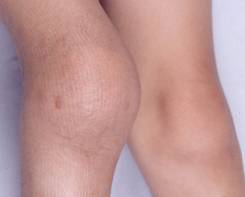What is Juvenile Rheumatoid Arthritis? How to manage it? What are the precautions to be taken? What are the signs and symptoms? What is the cause of this disease? How to treat it? How can homeopathy help you? All of this answered, in this post and of course our doctors always there to help you. Just fill in your details in the form down below and we will answer all your questions for FREE!

What is juvenile rheumatoid arthritis?
Juvenile Rheumatoid arthritis is a chronic disease. It damages the joints of the body. Inflammation causes damage. The inflammation occurs in joints and results in pain, stiffness, and swelling and other symptoms. The condition when five or more joints are affected is called polyarticular disease.
Children may present with high fevers, skin rashes, and symptoms of inflammation of organs such as the heart, spleen, liver, and other parts of the digestive tract. It is known as Still’s disease. The medicines used in the treatment of disease especially non-steroidal anti-inflammatory drugs cause complications in children. On frequent intake of drugs irritation, pain and bleeding in the stomach and upper intestine occurs. A child must have frequent blood tests that help in the screening of these problems. Joint inflammation affects other organs. If the inflammation is not stopped, it destroys the affected joints and affects other tissues. Commonly affected joints are shoulder, elbow, hip, and knee.
Who is affected by juvenile rheumatoid arthritis?
Juvenile rheumatoid arthritis is more common among children younger than 8 years of age. Affected children have more chances of acquiring inflammatory eye problems and a higher risk of developing an adult form of arthritis.
What is the mortality rate of juvenile rheumatoid arthritis?
The death rate is higher than in healthy children. Children who develop systemic symptoms have the highest death rate.
How does juvenile rheumatoid arthritis occur?
Juvenile rheumatoid arthritis is an auto-immune disease. Its cause is not known.
The chronic inflammation of the synovial fluid is linked to hyperactivity of the immune system. The immune system produces antibodies to fight “invaders” but an auto-immune disease, the antibodies attack the body’s own healthy tissues.
In arthritis, the antibodies attack synovium which results in inflammation. The inflammation results in thick synovium and it grows abnormally; hence it expands outside the joints and puts pressure on the bone, the cartilage of joints, ligaments, tendons, and damages them. The exact cause of the auto-immune disease is not known.
What are the signs and symptoms of juvenile rheumatoid arthritis?
-Pain, warmth, stiffness, and swelling in the joint.
-Stiffness and swelling are severe in the morning.
-Loss of joint function.
-Decreased range of motion.
-Limp indicates the involvement of the knee.
-The joint grows asymmetrically and results in deformity.
-Children with juvenile rheumatoid arthritis can also develop eye inflammations example uveitis and iritis that causes eye irritation, pain, and redness. If there is severe inflammation and it cannot be reversed it can cause loss of vision.
-Recurrent fevers.
-Skin rash.
-Muscle aches.
-Lymph node swelling.
-Weight loss associated with diarrhea indicates inflammation of the digestive tract.
-Children with JRA (juvenile rheumatoid arthritis) grow slowly than average.
Is juvenile arthritis curable?
There is no cure for juvenile arthritis but the accurate diagnosis and early treatment helps to relieve the inflammation, controls pain and also improves the quality of life. With early treatment, remission is possible.
Does juvenile arthritis shorten life span?
In general, it is expected that the life expectancy could be shortened roughly by 7 to 9 years in persons suffering from juvenile arthritis or rheumatoid arthritis.
What age does juvenile arthritis start?
Inflammation begins before puberty i.e before the patient reaches the age of 16 and the symptoms last for more than 6 weeks. JIA (juvenile rheumatoid arthritis) may involve one or many joints, and may also affect the eyes.
What investigations are to be done for juvenile rheumatoid arthritis?
The physical examination may show swollen, warm, and tender joints that result in pain on moving. The child may have a rash. Other signs include swollen liver, spleen and lymph nodes.
Blood tests include:
-Rheumatoid factor
-Anti-nuclear antibody test.
-Erythrocyte sedimentation rate (ESR)
-HLA antigens for HLA B27
-Complete blood count (CBC).
The fluid is taken out from the swollen joint. This is useful in finding the cause of the disease and pain is also reduced.
Other tests include:
-X-ray of a joint and chest
-Bone scan
-ECG
-Eye exam.
What is the treatment for juvenile rheumatoid arthritis?
-Nonsteroidal anti-inflammatory drugs (NSAIDs) such as ibuprofen or naproxen control the symptoms if a small number of joints is involved.
-Corticosteroids
-Anti-rheumatic drugs (DMARDs) e.g. methotrexate, etanercept, infliximab, etc. are used in children have arthritis with fever, rash, and swollen glands.
What are the risk factors for juvenile rheumatoid arthritis?
-Systemic JRA – Pericarditis. – Anemia. – Inflammation of the arteries in the hands or feet. – Inflammation of the liver.
-Periarticular JRA – Knee contractures, Uveitis, Leg length discrepancy.
-Polyarticular JRA – Skeletal abnormalities. – Involvement of the spine in the neck. The child is unable to bend the neck forward.
What dietary precautions or management is to be taken for juvenile rheumatoid arthritis?
-Exercising and active routine helps in keeping muscles and joints strong.
-Swimming, bicycling and walking are good activities.
-Always warm up before exercise.
-Consult the physician if there occurs pain from exercise.
-Some children need surgery especially joint replacement.

 If you are unsatisfied with our treatment and do not want to continue the medicines you can ask for refund within 24 hours of making the payment.
If you are unsatisfied with our treatment and do not want to continue the medicines you can ask for refund within 24 hours of making the payment.